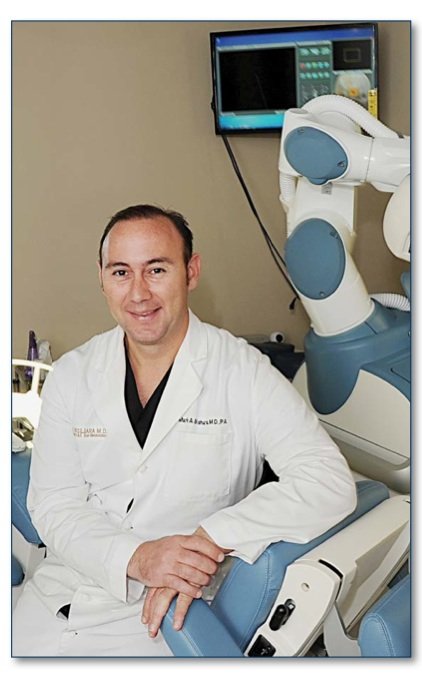
Dr. Bishara’s office locations in Mansfield and Southlake, TX have also added this important step in the Follicular Unit Extraction (FUE) procedure, a step that until now needed to be performed by hand. The goal of the new function is for the robot to automatically obtain the maximum number of donor hairs with the least amount of wounding and the greatest cosmetic benefit for the patient. Dr. Bishara is the only doctor in Texas that offers Graft Site Selection.
How Does it Work?
Using robotic graft selection, the hair restoration surgeon programs the ARTAS robot to harvest follicular units which contain two or more hairs by selectively skipping over the 1-hair units. Using its advanced optical guidance system, the robot orients itself to the scalp by way of special markings on a tensioner, a plastic frame-like device that is positioned on the donor area. The software then rapidly analyzes each graft and selects the appropriate ones for extraction. It then dissects these follicular units from the surrounding scalp tissue.
The Importance of Graft Selection in FUE
In FUE hair transplant procedures, the surgeon wants to harvest as much donor hair as possible while leaving the fewest number of wounds. To minimize the number of wounds, you would want to extract only the units that contain the largest amount of hair. However, smaller grafts of 1-hair are typically needed to create a natural-looking hairline and temples. By selecting and extracting larger grafts first, and then extracting smaller ones only as needed, surgeons can both minimize wounding and harvest an adequate number of follicular units of varying size so as to enhance the cosmetic benefit of the procedure. Smaller grafts can be generated by dividing the larger grafts without increasing the donor wounding.
This News is brought to you courtesy of Dr. Bishara and The Paragon Plastic Surgery & Med Spa





